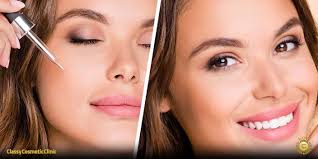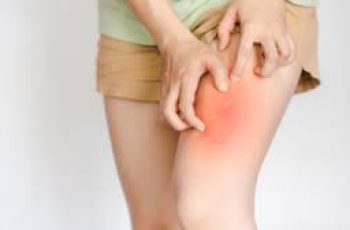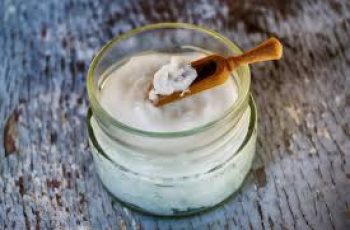
Can You use Hyaluronic Acid After Microblading?
Our obsession with eyebrows dates to even before 2015 and has continued to grow steadily with the variety of skin and makeup products resulting in us being spoilt for choice. Microblading is without doubt the biggest beauty trend in recent years, if you’re unsure of what microblading is, it’s a semi-permanent tattoo which is achieved with a blade containing dye is used to make hair like strokes. These involve minor cuts to the skin which need to have considerable aftercare to avoid any infections.
With this is mind there are some dos and don’ts when it comes to looking after your microblading. Naturally you would want to include an ingredient that is known for its hydrating and beneficial properties, such as hyaluronic acid. Before you use it, however, let’s find out together whether you can use the humectant ingredient after microblading.
If you are wanting to find out more about hyaluronic acid and how it works on the skin there is a dedicated blog post for you to check out.
Can you put hyaluronic acid on mircobladed brows?
No, if your microblading has been done recently and they are still in the healing process, it is best to avoid using hyaluronic acid on the brows. This is due to the precautions that need to be followed as I have already mentioned, infection is at high risk when the microblading is still new and fresh.
The healing process will take about a week and a half, during this time there are several steps you need to take. Avoid touching or rubbing your brows, don’t use any form of makeup, and finally avoid getting them wet. The latter is something that may feel impossible which is why many professionals suggest taking baths, instead of showers, as well as applying a layer of petroleum jelly to create a water-resistant barrier.
Once the eyebrows have healed completely, you are able to use hyaluronic acid in your daily routine and you can apply it directly to the eyebrows if you wish. you’ll find that due to the hydrating, humectant traits of hyaluronic acid you are able to target any potential dryness that can occur for short amount of time after you have had the microblading procedure.
What should I put on my face after microblading?
You can continue using your normal daily skincare routine after having microblading, as long as you apply your products without them getting into contact with your eyebrows or making them wet whilst they are still healing.
Once the healing process continues and the brows are showing signs of becoming completely healed, once the scabs have gone it is generally considered safe to use your brow related products again, such as makeup and growth serums. The serums and their formulas should not include any harsh exfoliating ingredients or cause the colour to become altered.
There is one product that needs to be used daily, come rain or shine, and that is an SPF of 30 and above which should be applied all over the face, including the eyebrows. By using sunscreen on the brows will help to prolong the pigmentation of your microblading and keeping your brows looking their best.
What should you not do after microblading?
The aftercare of microblading is very similar to those of looking after a new tattoo. What you may find is that the pigment of your brows a day or two after the procedure will appear very dark and the skin underneath will look a little red. Two hours after microblading it is advised to clean the brows with sterilised water using a cotton bud every 15 minutes to remove any excess dye whilst keeping the area clean. Here are some examples of what you should avoid doing after having microblading.
Avoid getting your fresh brows wet for the first 10 days. Try to keep your face dry whilst taking a shower and gently cleanse the skin avoiding the brow area all together.
Don’t pick, pull, or itch the eyebrow area at all during the healing process.
Avoid any activities that will result in you sweating until your brows are fully healed.
Keep your hair away from your brows to prevent any bacteria from crossing over.
Apply the healing balm you receive from the professional who performed your procedure.
By following those tips you’ll find you are able to keep on top of your brows and ensure they heal effectively without any risk of infection or discomfort. If you have any concerns with how your brows are healing consult with either your doctor or the trained professional who performed the microblading.
What should you put on your eyebrows after microblading?
Once you have had your eyebrows microbladed, you will be given a small pot of aftercare ointment to help the skin heal. This should be applied using a cotton swab and clean hands whilst spreading a thin layer of the ointment across the brows. Remember you only need a thin layer of the healing balm on the brows, and you should avoid them looking glossy, shiny, or greasy as this will indicate you have applied too much and will in fact, slow down the healing process all together.
How do you prolong microblading eyebrows?
With microblading being semi-permanent, the longevity of maintaining them is something everyone wants to achieve. Typically, you can expect your microblading to last between 12 months to 2 years, this is very much dependant on how everyone reacts to the pigmentation differently and how long it’ll last. With that in mind, we’ll now share with you some tips on how to keep you mircobladed brows look their best for the longest amount of time.
Stay away from excessive sun exposure after having your brows microbladed. This will help with the healing process and keep your eyebrows looking fresh and as pigmentated as possible.
Do not use any form of dye on the brows after microblading. You may find that during the healing process the pigment can begin to appear patchy and it may look as though the procedure hasn’t worked. This is all part of the process and is perfectly normal, if you are unhappy with your results you can consult with your trained professional about your options during your top-up appointment which usually takes place 18 months after.
Skin hydration will help immensely! Keep your skin looking its best by using hyaluronic acid enriched products in your routine. This will help the pigment of your brows last.
There you have a little more information about using hyaluronic acid after microblading. As I have already mentioned, it’s best to consult with a doctor or trained professional if you have any worries. Don’t forget to come and follow us on Instagram for daily skin tips, new products, and discounts, look forward to seeing you there!


